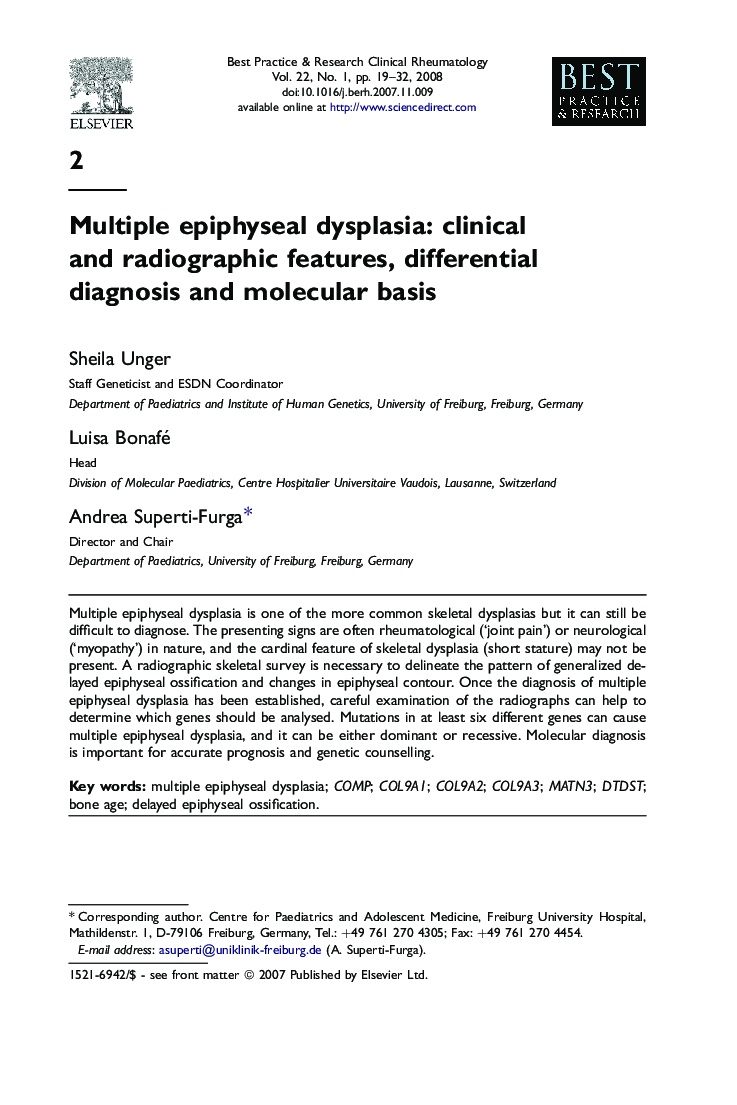| Article ID | Journal | Published Year | Pages | File Type |
|---|---|---|---|---|
| 3343579 | Best Practice & Research Clinical Rheumatology | 2008 | 14 Pages |
Multiple epiphyseal dysplasia is one of the more common skeletal dysplasias but it can still be difficult to diagnose. The presenting signs are often rheumatological (‘joint pain’) or neurological (‘myopathy’) in nature, and the cardinal feature of skeletal dysplasia (short stature) may not be present. A radiographic skeletal survey is necessary to delineate the pattern of generalized delayed epiphyseal ossification and changes in epiphyseal contour. Once the diagnosis of multiple epiphyseal dysplasia has been established, careful examination of the radiographs can help to determine which genes should be analysed. Mutations in at least six different genes can cause multiple epiphyseal dysplasia, and it can be either dominant or recessive. Molecular diagnosis is important for accurate prognosis and genetic counselling.
